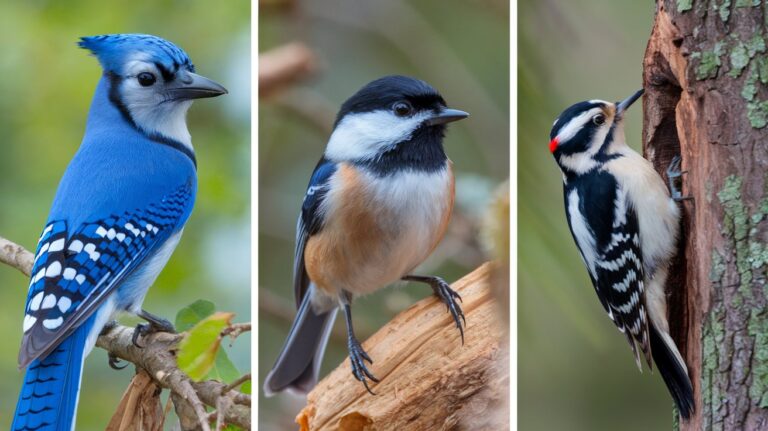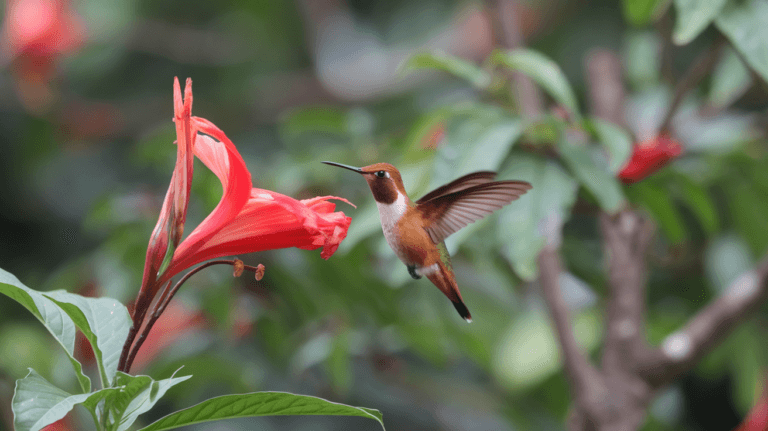Backyard Birds In Oregon (25 Species with Pictures!)
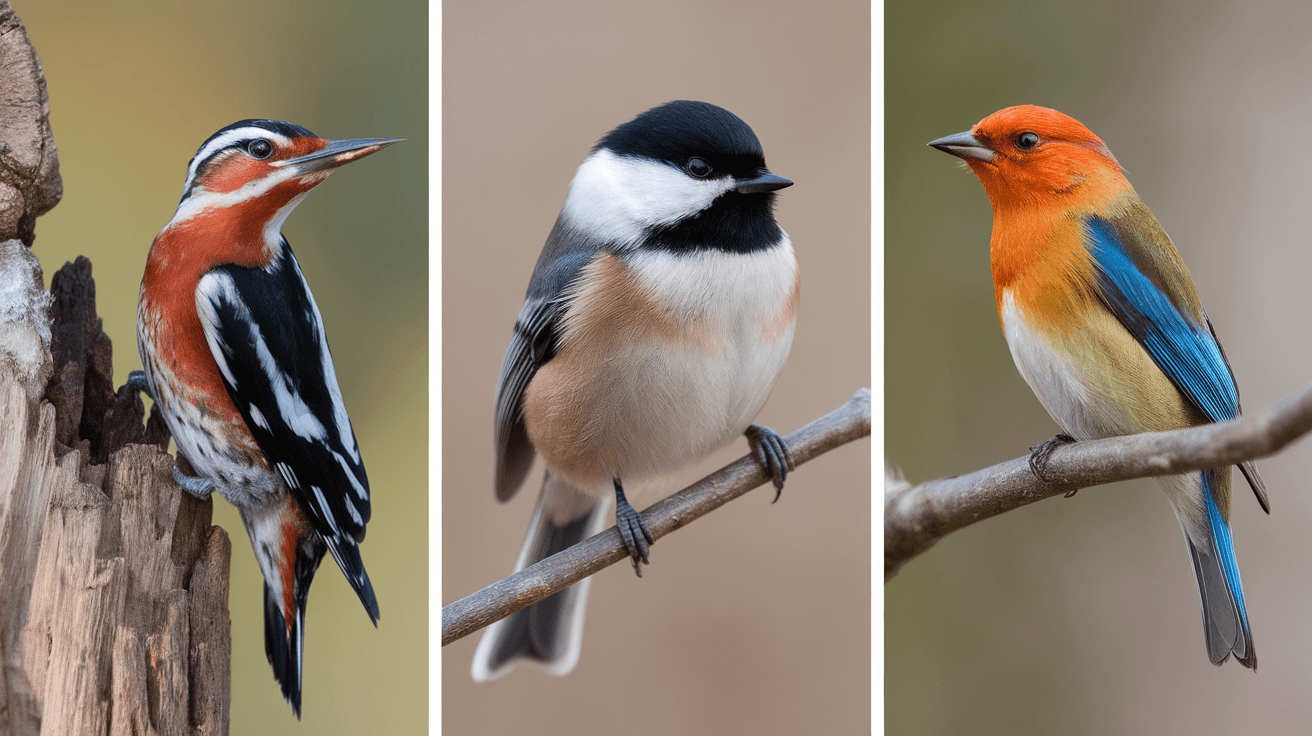
Oregon boasts an impressive diversity of bird species, with 547 different birds documented across the state, making it the fifth most bird-diverse state in the United States.
For backyard bird enthusiasts, Oregon offers particularly rich opportunities for bird watching, with 34 species regularly visiting backyard feeders.
These feathered visitors primarily consist of sparrows, finches, and their allies, along with woodpeckers, chickadees, nuthatches, and various other species that have adapted to human-populated areas.
While dozens of species might grace your Oregon backyard throughout the year, we will explore the 25 most popular species that you’re most likely to encounter at your feeders and in your garden.
Jump to a Section
- 1) American Robin
- 2) Anna’s Hummingbird
- 3) Black-capped Chickadee
- 4) Dark-eyed Junco
- 5) House Finch
- 6) Ruby-crowned Kinglet
- 7) Purple Finch
- 8) Spotted Towhee
- 9) Song Sparrow
- 10) Wilson’s Warbler
- 11) Evening Grosbeak
- 12) Downy Woodpecker
- 13) Hairy Woodpecker
- 14) Red-breasted Nuthatch
- 15) Northern Flicker
- 16) Mourning Dove
- 17) Pine Siskin
- 18) Steller’s Jay
- 19) Bushtit
- 20) Rock Pigeon
- 21) Varied Thrush
- 22) White-crowned Sparrow
- 23) Hermit Thrush
- 24) Red-winged Blackbird
- 25) Brown-headed Cowbird
1) American Robin
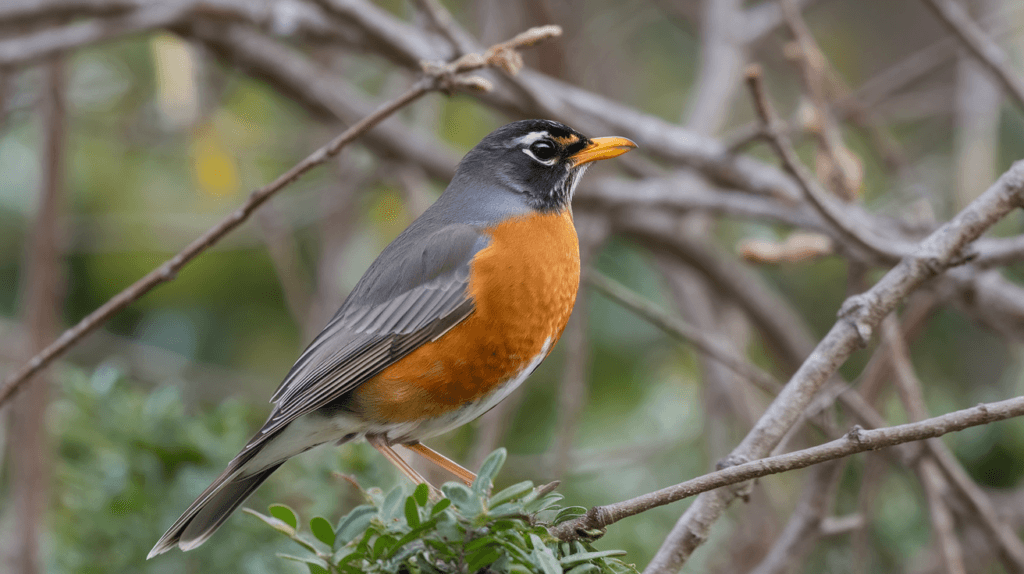
The American Robin is a common sight in Oregon’s backyards, especially in the northwestern regions and the Willamette Valley.
You’ll notice them with their warm orange breasts and solid gray backs. They thrive in various habitats, avoiding dense forests.
Watch them hop around, hunting for earthworms and insects, or see them flocking together in winter, seeking fruits and roosting communally at night.
2) Anna’s Hummingbird
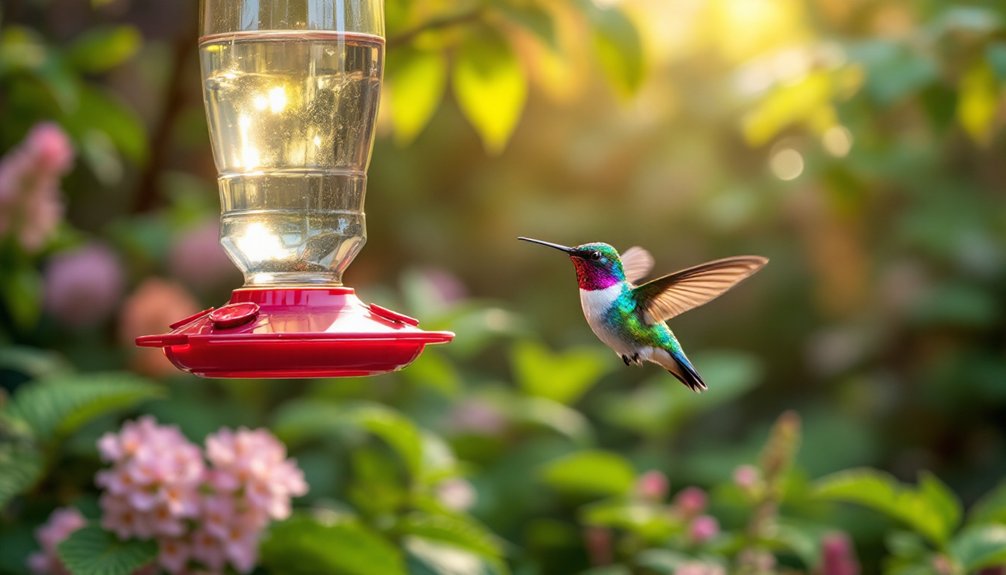
Dazzling colors and agile flight make Anna’s Hummingbird a fascinating visitor to Oregon’s gardens and urban areas.
You’ll spot them year-round along the Pacific coast, from Portland to the Pacific Flyway. They thrive in diverse habitats, including gardens and open woods.
Males dazzle with pink iridescence, performing diving displays, while their diet includes nectar, insects, and tree sap, essential for their rapid metabolism.
3) Black-capped Chickadee
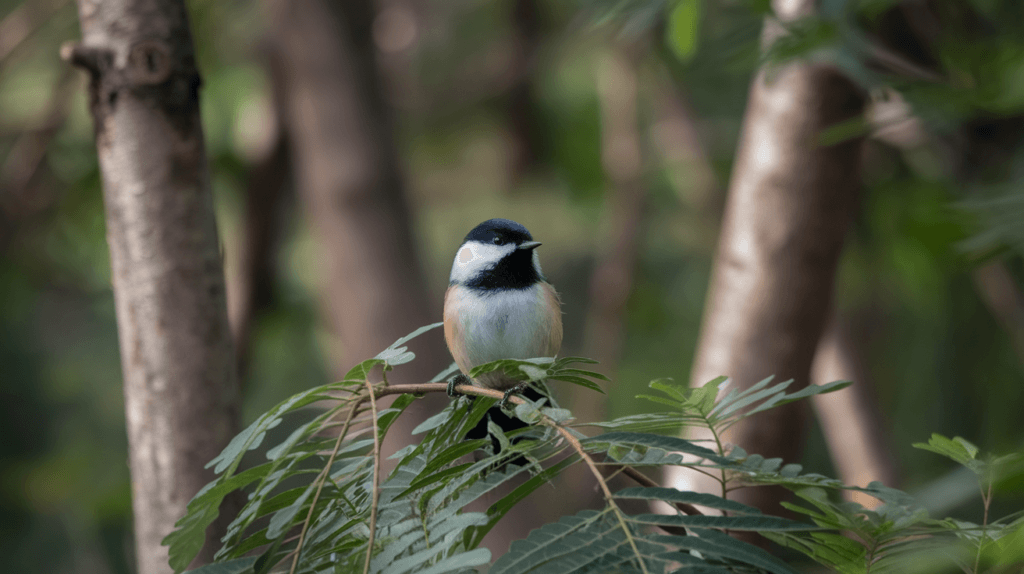
Chickadees, with their distinctive black caps and cheerful calls, are a familiar sight in Oregon’s woodlands and gardens.
They thrive in open sites near deep woods, often flitting about small trees. These energetic birds form flocks, stash seeds for later, and favor nesting in cavities of dead trees.
You’ll spot them at feeders, where they quickly grab seeds before darting away.
4) Dark-eyed Junco
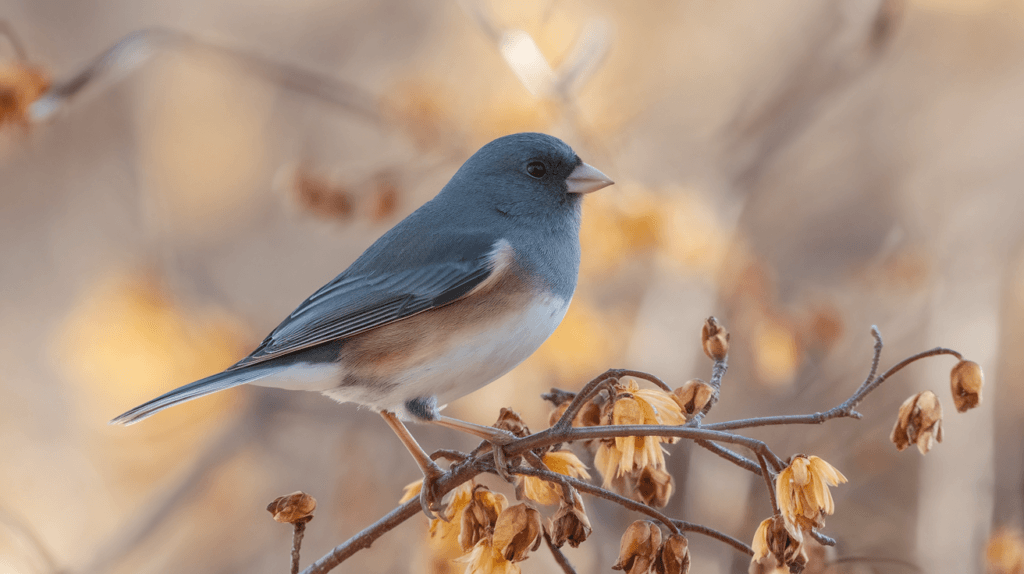
Dark-eyed Juncos are distinctive sparrows easily recognized by their slate-gray upper parts, white belly, and flashing white outer tail feathers visible during flight.
These common year-round residents become especially noticeable in Oregon backyards during winter months (October through April) when mountain-breeding populations move to lower elevations.
Look for these ground-feeding birds hopping beneath feeders and shrubs, where they scratch at the soil with both feet simultaneously to uncover seeds and small insects.
Juncos prefer sheltered areas with nearby escape cover, making them frequent visitors to yards with mixed habitat including trees, shrubs, and open feeding areas.
5) House Finch
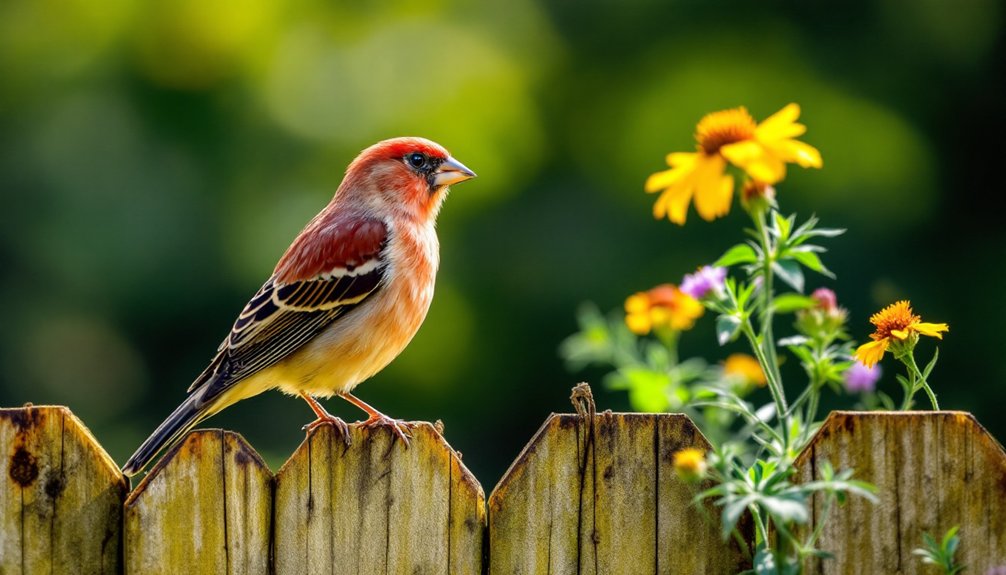
House Finches are a common sight in Oregon’s urban and suburban landscapes.
You’ll recognize these small birds by their vibrant males with red heads and breasts, while females sport gray-brown streaks.
These social birds form large flocks, often visiting feeders. They thrive in various habitats, from urban centers to rural areas, and prefer seeds, buds, and berries, especially enjoying sunflower seeds.
6) Ruby-crowned Kinglet
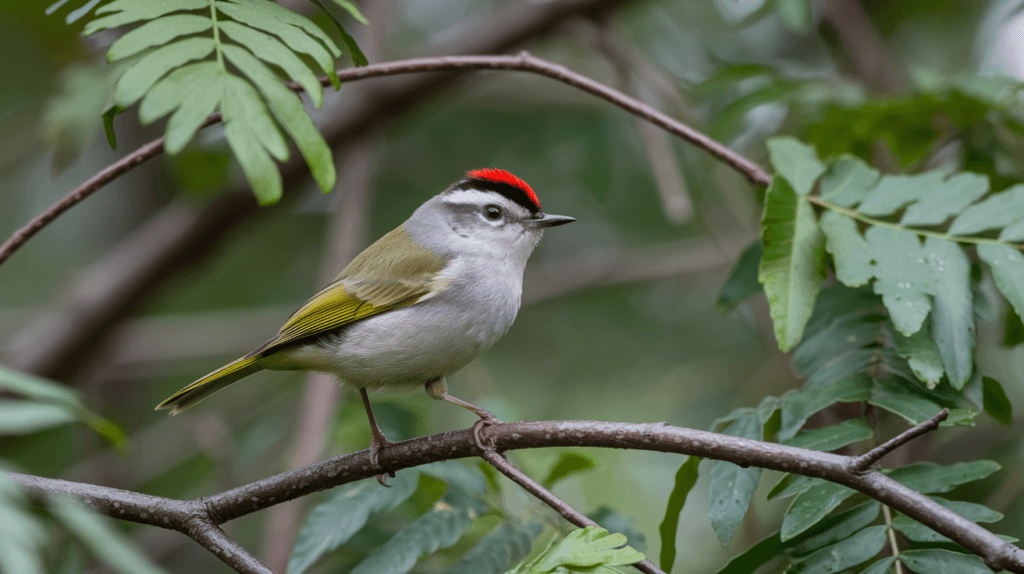
Ruby-crowned Kinglets are tiny, olive-green birds with a distinctive white eye-ring and an often-concealed ruby red crown patch that males flash when excited or agitated.
These energetic birds are most commonly spotted in Oregon during spring and fall migrations (March-May and September-November), though some winter in western Oregon’s milder areas.
Look for their constant movement as they flit from branch to branch, hovering momentarily to glean insects from foliage with their thin bills.
These birds are more easily detected by their repetitive, high-pitched “chit-chit” calls than by sight due to their small size and quick movements.
7) Purple Finch

The Purple Finch, a charming visitor to Oregon’s backyards, brings a splash of raspberry red to the landscape.
You’ll often find these medium-sized finches in the Umpqua region’s mixed forests. Males sport vivid red plumage, while females are brown-streaked.
They love sunflower seeds and visit feeders year-round.
Look for their cup-shaped nests high in coniferous trees during breeding season.
8) Spotted Towhee
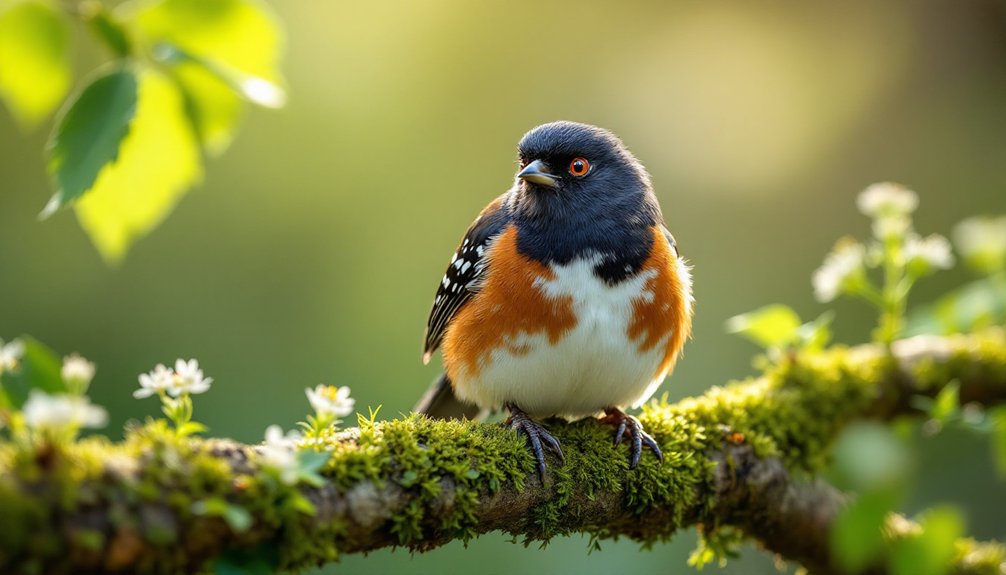
Spotted Towhees are striking, robin-sized birds with bold black (or dark brown in females) upper parts, vibrant rufous flanks, and a white belly adorned with distinctive black spotting.
These charismatic ground-dwellers are year-round residents throughout much of Oregon, particularly in areas with dense undergrowth, brushy edges, and native shrubs where they can skulk beneath the cover.
Listen for their characteristic scratching sounds as they perform their two-footed backward hop to uncover insects, seeds, and berries hidden in leaf litter, especially during early morning and late afternoon hours.
Their rich “drink-your-teaaa” song and sharp “chewink” call are common sounds in Oregon backyards throughout spring and summer months (March through August).
9) Song Sparrow
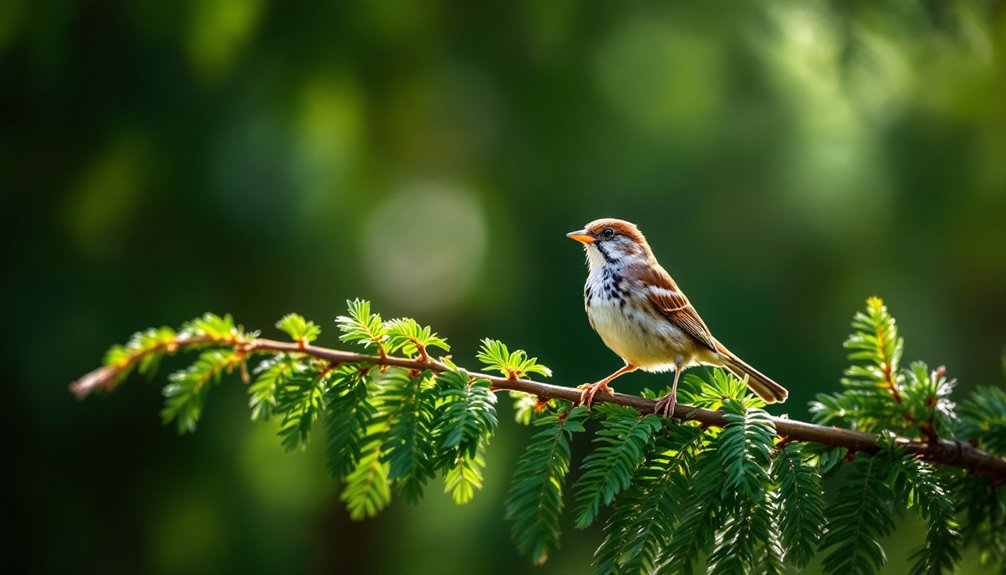
Song Sparrows are medium-sized, streaky brown birds with distinctive dark breast spots that often converge into a central spot or “stickpin.”
These adaptable birds are common year-round residents throughout Oregon, frequenting backyards with dense shrubbery, tall grasses, and water sources nearby.
Their peak activity occurs during spring and summer mornings (March through August) when males deliver their beautiful, melodic songs from exposed perches to establish territory.
Look for them foraging on the ground near cover, where they hop rather than walk as they search for seeds and insects, often visiting feeders with millet and cracked corn scattered on the ground or low platform feeders.
10) Wilson’s Warbler
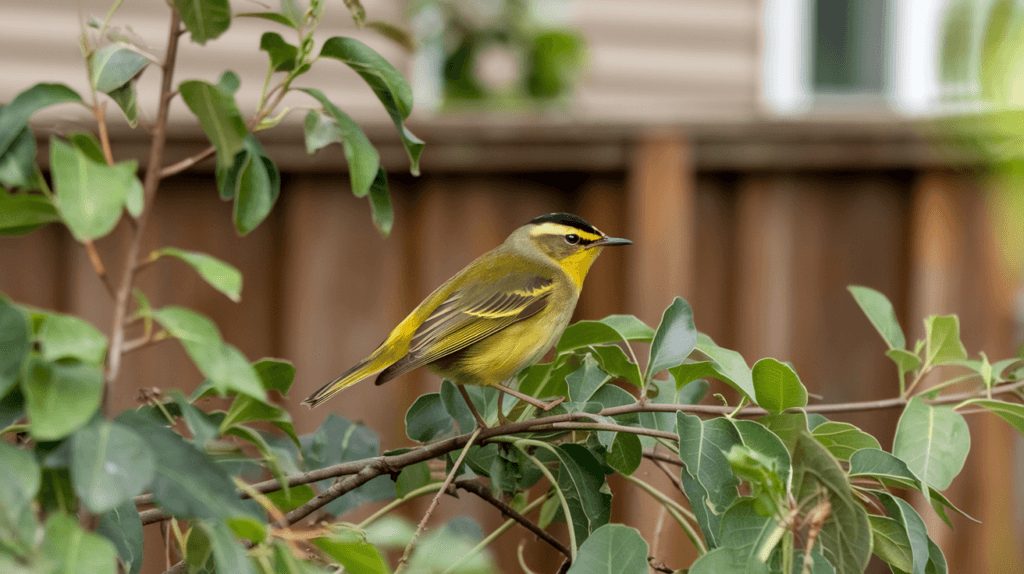
Wilson’s Warblers are bright yellow birds with distinctive black caps (more prominent in males) and constant, energetic movement that makes them a delight to observe.
These summer residents arrive in Oregon from late April through May and depart by September, frequenting brushy undergrowth near streams, forest edges, and well-vegetated backyards.
Their peak activity occurs during mornings when they can be seen darting through shrubbery catching insects on the wing or gleaning them from leaves. Listen for their accelerating “chit-chit-chit-chit” song that descends slightly in pitch toward the end.
11) Evening Grosbeak
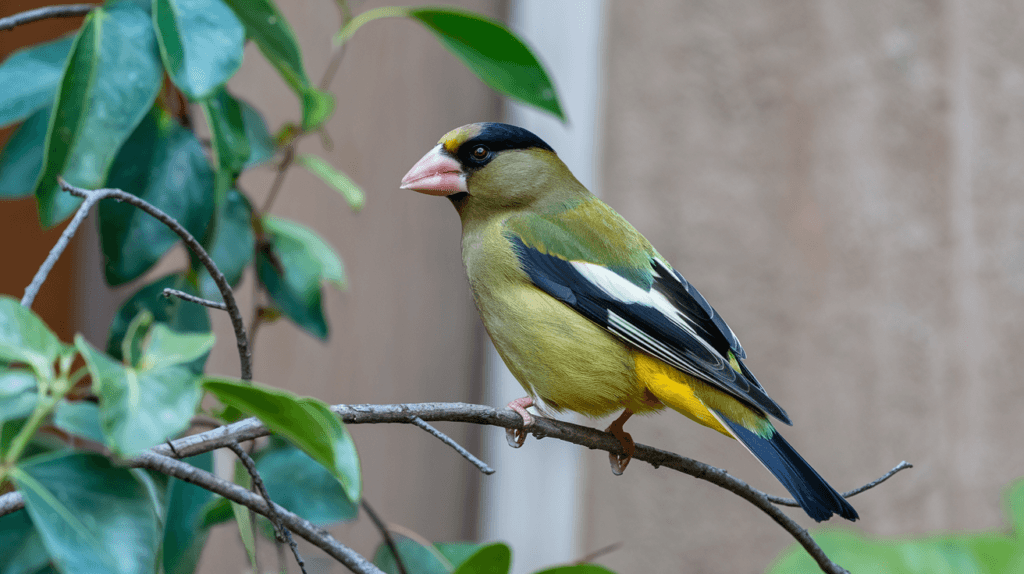
Evening Grosbeaks are stocky, striking birds with thick, pale greenish-yellow bills and bright yellow and black plumage (males) or more subdued grayish-yellow tones (females).
These nomadic finches appear irregularly in Oregon backyards, sometimes absent for years before suddenly arriving in large, noisy flocks during winter months (November through March).
They’re particularly attracted to platform feeders stocked with black oil sunflower seeds and can empty feeders quickly with their powerful bills designed for cracking large seeds.
12) Downy Woodpecker
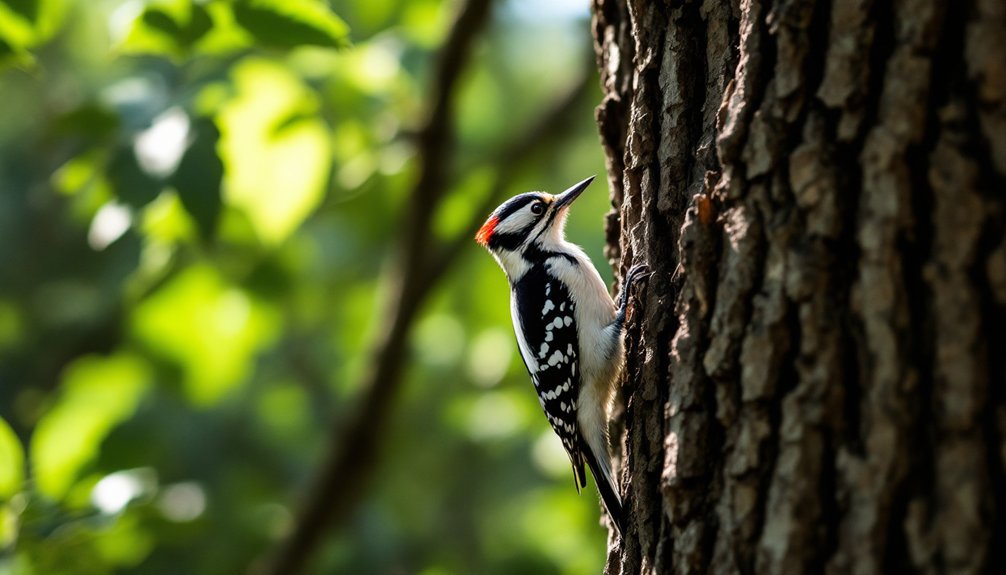
Though small in size, the Downy Woodpecker is a familiar and energetic presence in Oregon’s diverse landscapes.
You’ll often spot them in deciduous and mixed forests, suburban yards, and city parks, especially around willows and aspens.
Their diet mainly consists of insects, but they also enjoy berries and grains.
At your feeder, they’re attracted to suet, sunflower seeds, and peanuts.
13) Hairy Woodpecker
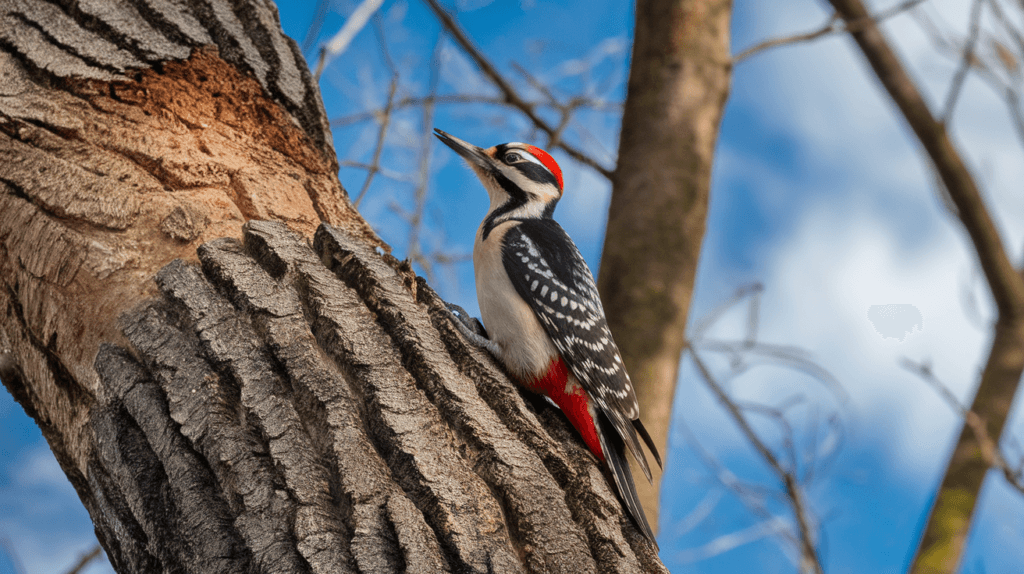
Spotting a Hairy Woodpecker in Oregon is a treat for bird enthusiasts.
These medium-sized woodpeckers thrive in various forested areas, especially where large, dead trees are present. Their black and white plumage and distinctive drumming sounds make them easily recognizable.
Feeding on insects, spiders, and seeds, they diligently search tree bark for food.
Conservation efforts are essential to maintain their natural habitat and population.
14) Red-breasted Nuthatch
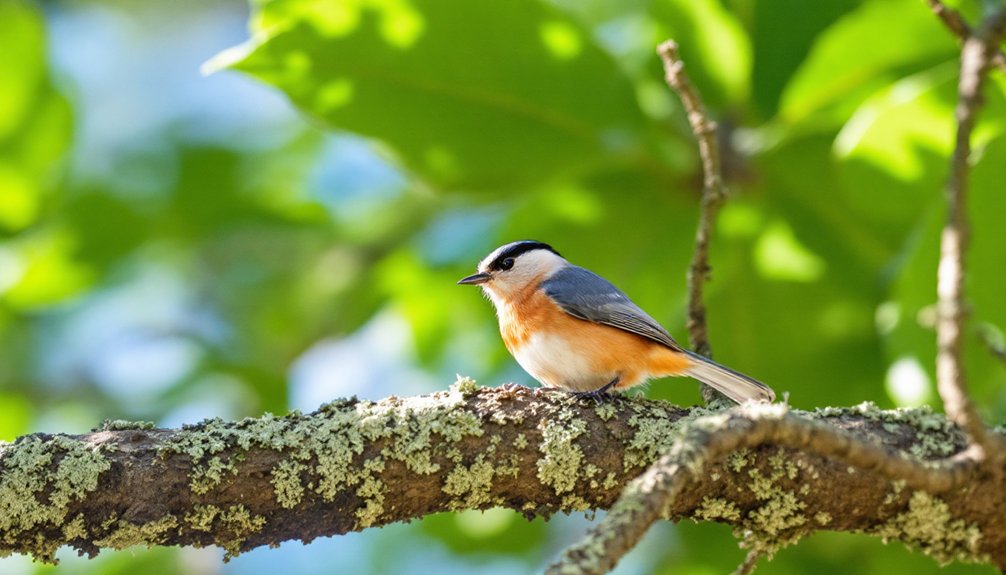
Red-breasted Nuthatches are compact birds with slate-blue backs, rusty-cinnamon underparts, and bold black-and-white face stripes that give them a masked appearance.
These agile acrobats are year-round residents in Oregon’s coniferous forests, though they may appear in greater numbers in backyards during winter months (October through April) when food becomes scarcer in their native habitats.
Watch for their distinctive behavior of moving headfirst down tree trunks and branches, probing bark crevices for insects and spiders with their straight, pointed bills.
These vocal birds announce their presence with a distinctive, nasal “yank-yank” call that carries surprisingly far, and they readily visit suet feeders and platform feeders offering peanuts, sunflower seeds, and pine nuts.
15) Northern Flicker

Northern Flickers are large, distinctive woodpeckers with brown barred backs, spotted underparts, and a conspicuous white rump patch that flashes during their undulating flight.
These charismatic birds are year-round residents throughout Oregon, becoming more visible in backyards during fall and winter months (September through March) when they move from forest habitats into more suburban areas.
Unlike most woodpeckers, Northern Flickers spend considerable time on the ground, where they use their slightly curved bills to probe for their favorite food—ants and beetles—often leaving characteristic small, conical excavations in lawns.
16) Mourning Dove
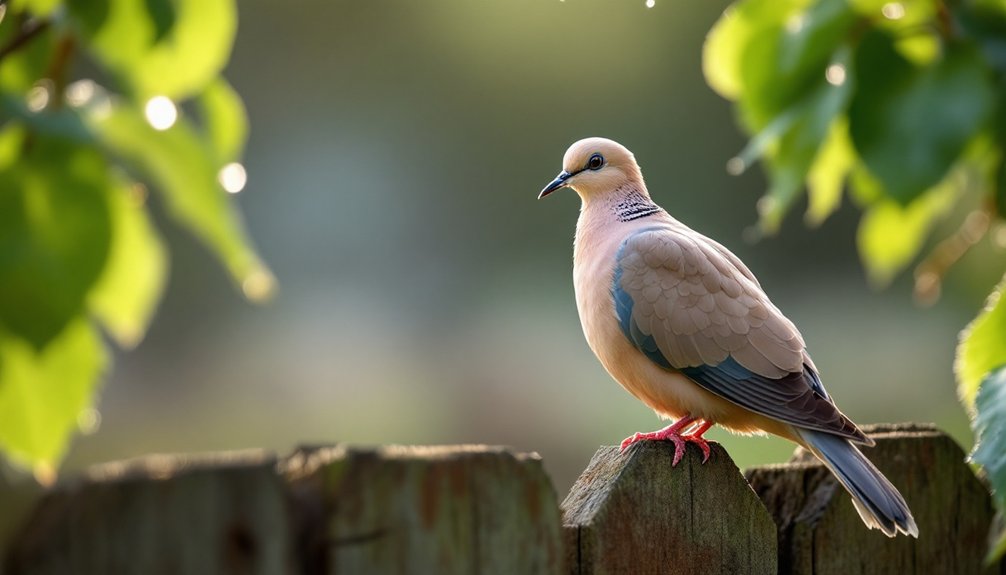
Mourning Doves are medium-sized birds with soft grayish-brown plumage, small heads, and distinctive long, pointed tails with white outer feathers visible during flight.
These gentle birds are common year-round residents throughout Oregon, though their numbers increase in summer months (April through September) when northern-breeding populations arrive.
Mourning Doves are ground feeders that readily visit backyard areas with scattered millet, cracked corn, or sunflower seeds, typically feeding most actively during early morning and late afternoon hours while making their soft, mournful “coo-ah, coo, coo, coo” calls that give them their name.
17) Pine Siskin

Pine Siskins are small, streaky finches with subtle yellow edges on their wings and tails that flash during flight.
These social birds often visit feeders in large, noisy flocks during winter months (October through April), especially where nyjer seed or black oil sunflower seeds are offered.
Look for them in coniferous forests and mixed woodlands throughout Oregon, where they feed acrobatically on tree seeds and cones, often hanging upside down to reach food.
18) Steller’s Jay
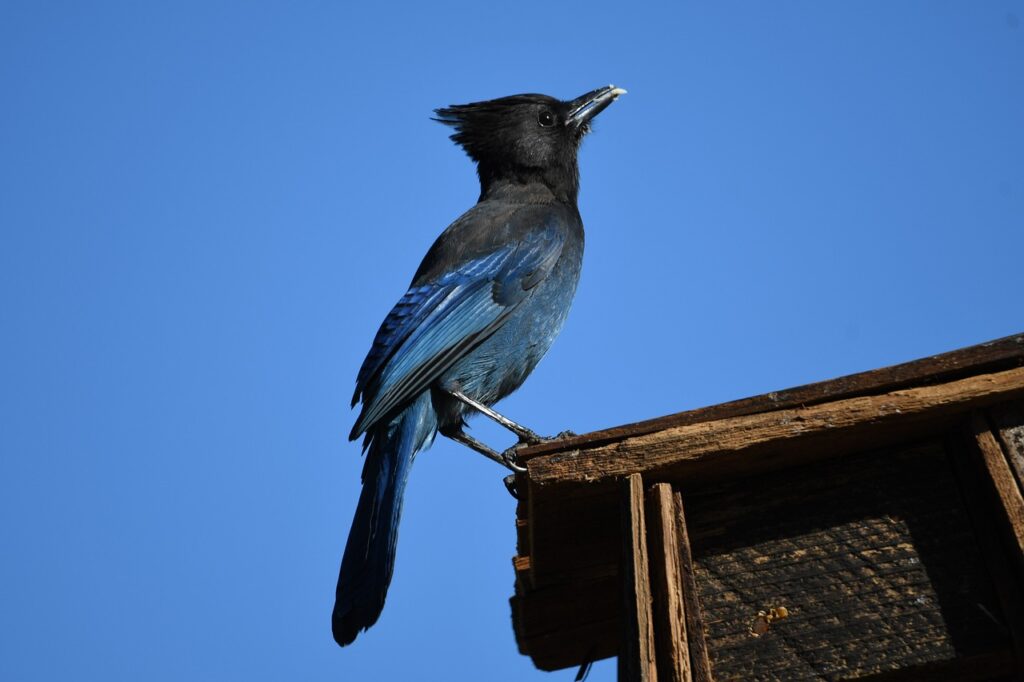
The Steller’s Jay is an unmistakable backyard visitor with its bold blue body, black crest, and confident presence.
These intelligent corvids are year-round residents in Oregon’s forested areas, particularly in coniferous regions and suburban neighborhoods near woodlands.
They’re most active in mornings and evenings, announcing their presence with a variety of harsh calls and remarkable ability to mimic other birds and sounds.
These opportunistic feeders will readily visit platform feeders stocked with peanuts, sunflower seeds, and suet.
19) Bushtit
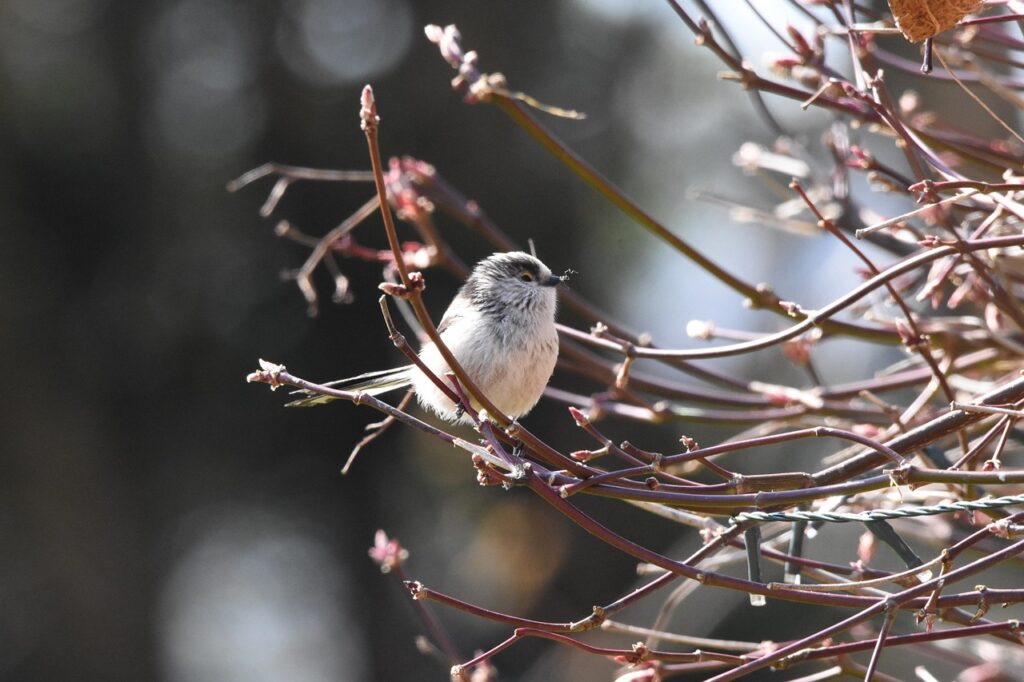
Bushtits are tiny, gray-brown birds that move through gardens and shrubs in chattering flocks of 10-40 individuals throughout the year.
These social creatures are most commonly spotted in western Oregon, where they perform acrobatic maneuvers while gleaning insects from leaves and branches.
Their most distinctive feature is their long, hanging sock-like nests woven from spider silk, moss, and plant fibers, typically built between February and June. Listen for their soft, continuous contact calls as they move quickly through vegetation.
20) Rock Pigeon
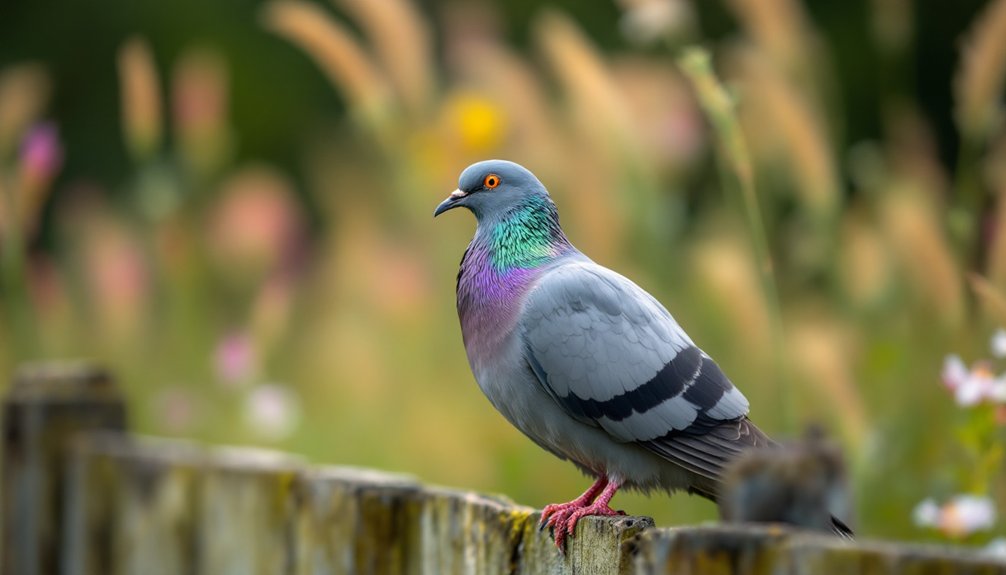
Rock Pigeons are chunky, gray birds with iridescent neck feathers and two dark wing bars that are ubiquitous in Oregon’s urban environments year-round.
These adaptable birds come in various color patterns ranging from the typical blue-gray to white, brown, or pied combinations, making them easily recognizable despite their plumage variations.
Rock Pigeons are most active during daylight hours and readily visit backyards with scattered bird seed, though they’re more commonly spotted in urban centers and agricultural areas than residential neighborhoods.
21) Varied Thrush
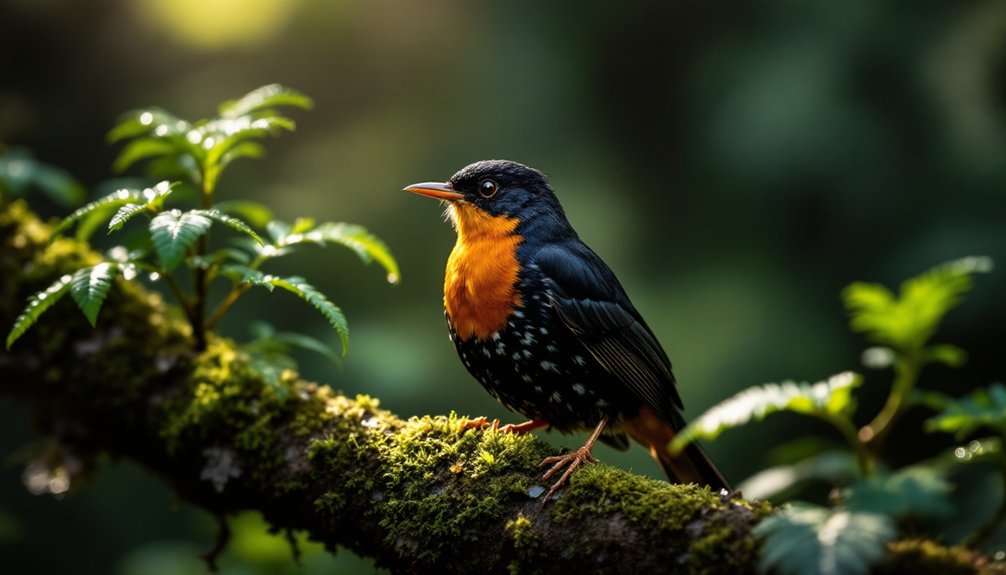
Varied Thrushes are robin-sized birds with striking slate-blue upperparts, orange breast and eyebrow, and a bold black breast band that appears incomplete in females.
These secretive birds breed in dense coniferous forests but become more visible in western Oregon backyards during winter months (November through March) when they descend from higher elevations in search of food.
Their haunting, ethereal single-note whistle that changes pitch is one of the characteristic sounds of Oregon’s winter woodlands, especially on foggy or overcast days.
22) White-crowned Sparrow
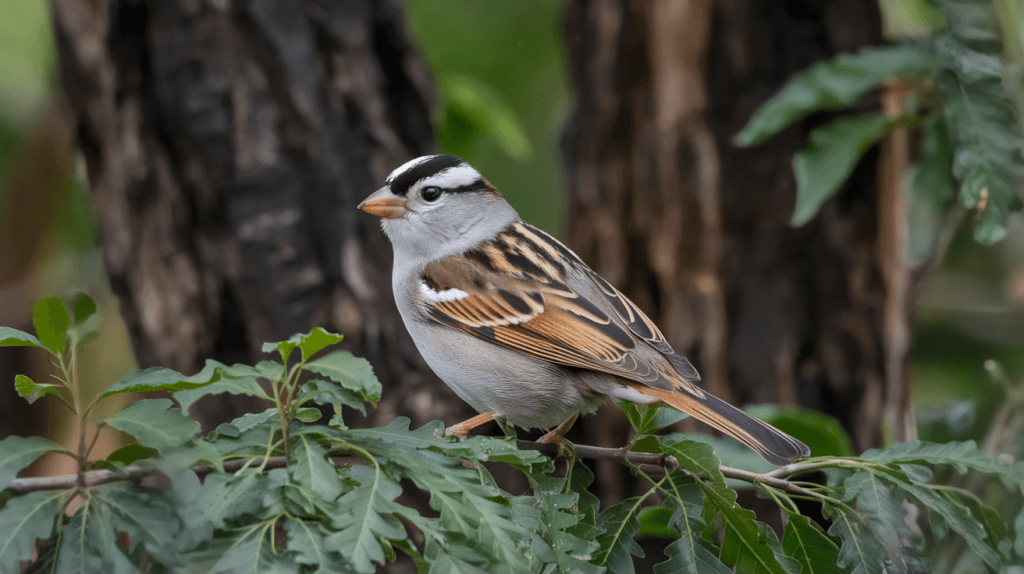
White-crowned Sparrows are handsome birds distinguished by bold black and white striped heads and gray breasts.
These sparrows are common in Oregon year-round in coastal areas, while inland populations increase during spring and fall migrations (March-May and September-October).
Look for them foraging on the ground in open areas with nearby brush, gardens, parks, and roadsides, where they scratch at the soil looking for seeds and insects. Their clear, whistled song is a familiar sound in many Oregon neighborhoods, particularly in morning hours.
23) Hermit Thrush
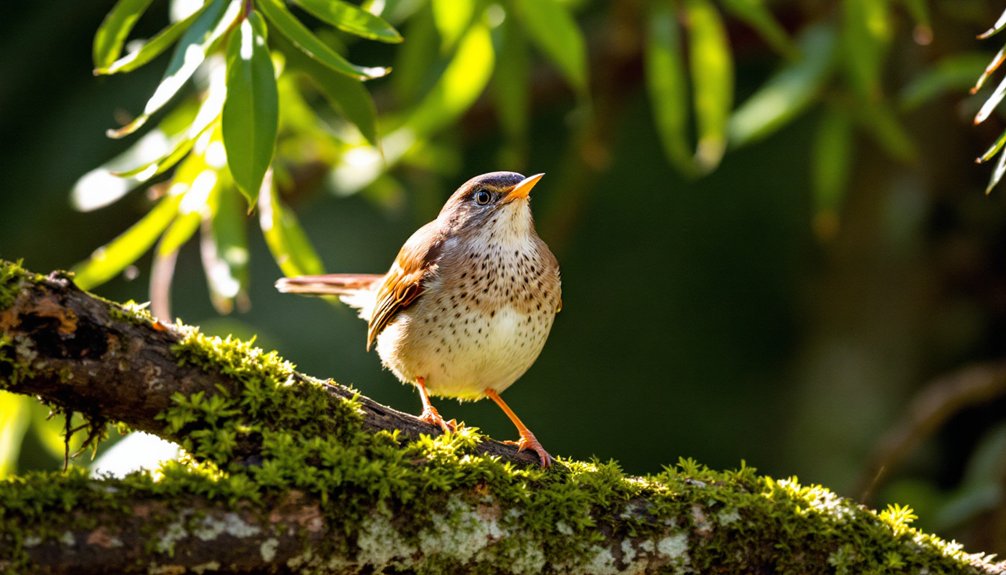
The Hermit Thrush, with its distinctive melodic song, frequents the dense understory of North America’s forests.
You’re likely to spot this chunky, robin-like bird by its brown back and spotted breast. Its reddish-brown tail often moves slowly up and down.
It forages on the forest floor, flipping leaves with its straight bill to find insects, while also enjoying a variety of berries.
24) Red-winged Blackbird
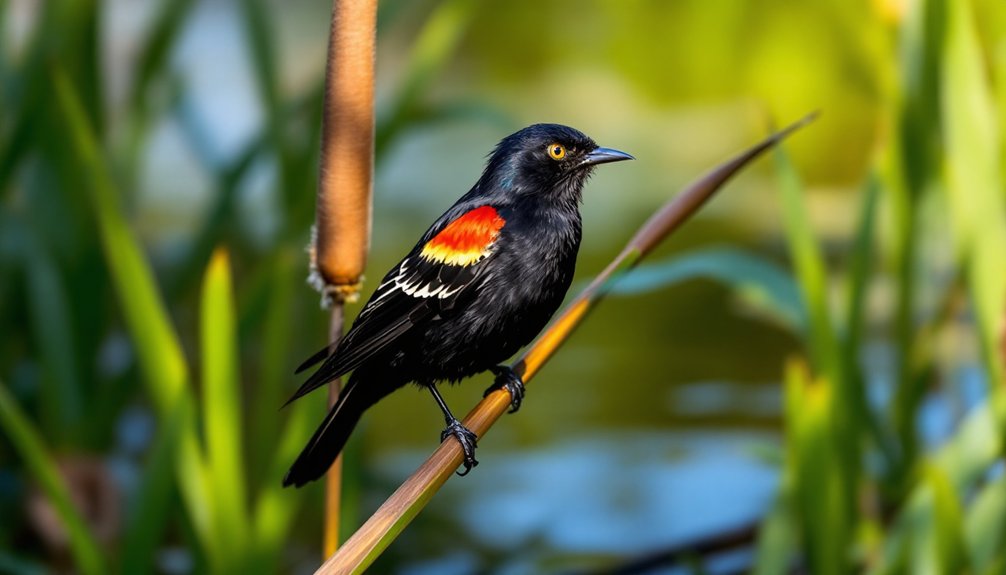
Red-winged Blackbirds are medium-sized birds with the males sporting glossy black plumage and brilliant red-and-yellow shoulder patches they prominently display when establishing territory.
These vocal birds are year-round residents in Oregon’s wetlands and open areas with scattered shrubs, becoming more visible in suburban backyards during winter months (October through February) when they often join mixed blackbird flocks.
Males arrive at breeding territories in late February and March, perching conspicuously on cattails, fence posts, or shrubs while delivering their distinctive “conk-la-ree” song with a fluffed display of their scarlet epaulets.
25) Brown-headed Cowbird
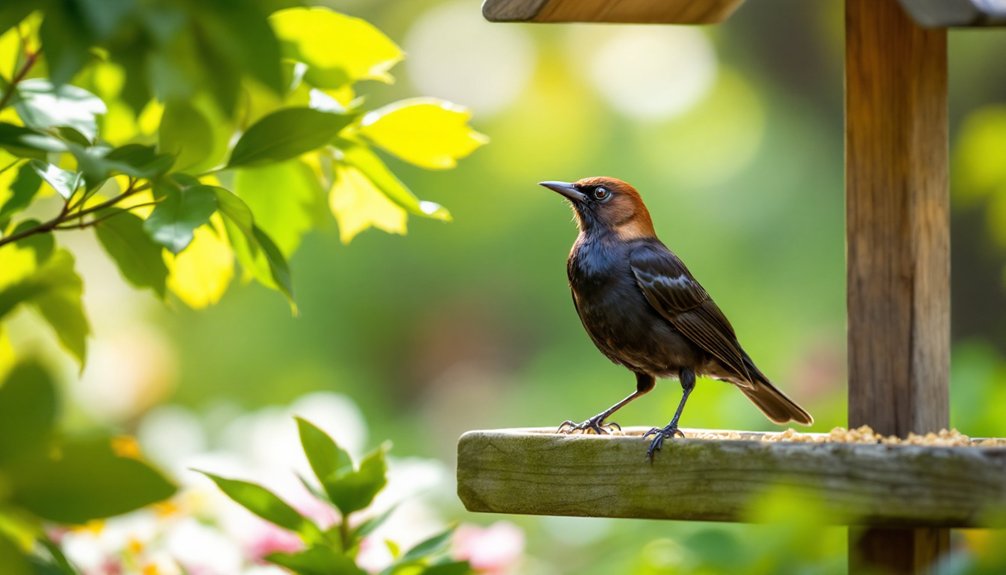
Brown-headed Cowbirds are stocky blackbirds with males displaying glossy black bodies and distinctive brown heads, while females are uniformly grayish-brown.
These controversial birds are brood parasites that lay their eggs in other birds’ nests, and they’re common throughout Oregon from late March through September, particularly in open woodlands, field edges, and suburban areas with bird feeders.
Look for them foraging on the ground in short grass, often following livestock or deer to catch disturbed insects, or visiting platform feeders offering millet and cracked corn.
- 24 Popular Backyard Birds In New Hampshire (With Pictures!) - March 24, 2025
- How to Attract Birds to a Window Feeder? (6 Expert Tips) - March 16, 2025
- How to Provide Water for Birds in Summer? (4 Easy Ways) - March 16, 2025

